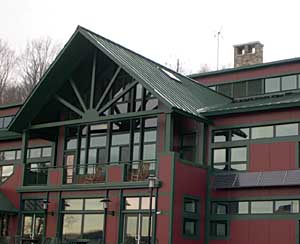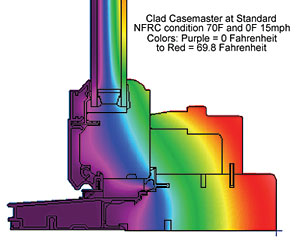Building Green with Windows and Doors
Designing for Energy Efficiency and Sustainability
LEED projects and good practice generally employ energy modeling as a basis for predicting building performance. An example is the Wind NRG Partners Manufacturing Facility in Hinesburg, VT; a Gold LEED certified project designed by William Maclay Architects and Planners, which has won several awards including recognition as a Psychologically Healthy Workplace from the Vermont Psychological Association. Completed in August 2004, the building includes a comprehensive daylighting scheme and operable windows in all spaces. The company expects to recoup the additional cost of construction to green standards ($13.81 per square foot or 8.21 percent) within just five years. Beyond the easy-to-calculate energy savings, however, expected long-term benefits include higher employee productivity, reduced absenteeism, and lower turnover, advantages that further will boost the company's bottom line.
|
Green Building clearly involves attention to all aspects of a project. In an ideal world, delivering energy efficiency and sustainability begins before site selection. Over a year was spent searching for the NRG site. The building is elongated on the east-west axis to maximize solar gain in winter and to capture daylight all year. Most of the 2,100 sq ft glazing is on the south facade, while the north side is bermed into the hillside.
While an urban site necessarily limits building placement options, it is still possible to take advantage of orientation and deal with traditionally dark airshafts in an innovative manner. To reflect light into the building from the airshaft, the south facade of St. Francis College Academic Center and Library, St. Francis College, Brooklyn, NY, designed by Levi, while a Principal with Helpern Architects, was covered in reflective, corrugated aluminum panels. The north facade has a smaller glass area than the southern walls to strike a balance between daylight and energy conservation.
|
Architectural elements also make significant contributions to Green Building. For the Fay School, Southborough, MA, the oldest junior boarding school in the country, The Office of Michael Rosenfeld, Inc. Architects, included screening on the southern exterior wall to limit summer heat entering the building and, on the interior, a light shelf to reflect the summer heat.











